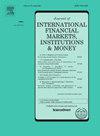Machine learning, memory and efficiency in cryptocurrency markets
IF 6.1
2区 经济学
Q1 BUSINESS, FINANCE
Journal of International Financial Markets Institutions & Money
Pub Date : 2025-10-06
DOI:10.1016/j.intfin.2025.102210
引用次数: 0
Abstract
This paper empirically examines whether machine learning (ML) methods can capture long memory in the cryptocurrency markets. We design two tests to evaluate seven widely used ML regression algorithms and sequence-to-sequence (Seq2Seq) models to determine their ability to capture long-memory characteristics of financial data. Specifically, we assess their accuracy in estimating the fractional integration parameter for both univariate and systemic memory. Additionally, we examine whether the predicted time series preserve the long-memory properties of the original cryptocurrency market data. Our findings reveal that most ML algorithms fail to handle long-memory series effectively, while models incorporating Long Short-Term Memory (LSTM) and Attention-LSTM components exhibit superior performance. Whilst comparing models using Mean Squared Errors (MSE), we find that our tests identify models better for directional predictions. These results highlight the limitations of conventional ML mechanism for long-range dependence and position Seq2Seq models as a promising alternative for addressing the complex movements of cryptocurrency time series. Our approach can be readily extended, offering both academics and practitioners a systematic procedure for evaluating arbitrary ML models, thereby yielding insights not only into their generalization of performance but also into the interpretability of their capacity for long-term dependence.
加密货币市场中的机器学习、内存和效率
本文实证研究了机器学习(ML)方法是否可以在加密货币市场中捕获长记忆。我们设计了两个测试来评估七种广泛使用的ML回归算法和序列到序列(Seq2Seq)模型,以确定它们捕捉金融数据长期记忆特征的能力。具体来说,我们评估了它们在估计单变量和系统记忆的分数积分参数d方面的准确性。此外,我们还研究了预测的时间序列是否保留了原始加密货币市场数据的长记忆特性。我们的研究结果表明,大多数ML算法不能有效地处理长记忆序列,而包含长短期记忆(LSTM)和注意力-LSTM组件的模型表现出优异的性能。在比较使用均方误差(MSE)的模型时,我们发现我们的测试更好地识别了定向预测的模型。这些结果突出了传统机器学习机制在长期依赖方面的局限性,并将Seq2Seq模型定位为解决加密货币时间序列复杂运动的有希望的替代方案。我们的方法可以很容易地扩展,为学术界和实践者提供一个评估任意ML模型的系统过程,从而不仅可以深入了解其性能的泛化,还可以深入了解其长期依赖能力的可解释性。
本文章由计算机程序翻译,如有差异,请以英文原文为准。
求助全文
约1分钟内获得全文
求助全文
来源期刊
CiteScore
6.60
自引率
10.00%
发文量
142
期刊介绍:
International trade, financing and investments, and the related cash and credit transactions, have grown at an extremely rapid pace in recent years. The international monetary system has continued to evolve to accommodate the need for foreign-currency denominated transactions and in the process has provided opportunities for its ongoing observation and study. The purpose of the Journal of International Financial Markets, Institutions & Money is to publish rigorous, original articles dealing with the international aspects of financial markets, institutions and money. Theoretical/conceptual and empirical papers providing meaningful insights into the subject areas will be considered. The following topic areas, although not exhaustive, are representative of the coverage in this Journal. • International financial markets • International securities markets • Foreign exchange markets • Eurocurrency markets • International syndications • Term structures of Eurocurrency rates • Determination of exchange rates • Information, speculation and parity • Forward rates and swaps • International payment mechanisms • International commercial banking; • International investment banking • Central bank intervention • International monetary systems • Balance of payments.

 求助内容:
求助内容: 应助结果提醒方式:
应助结果提醒方式:


